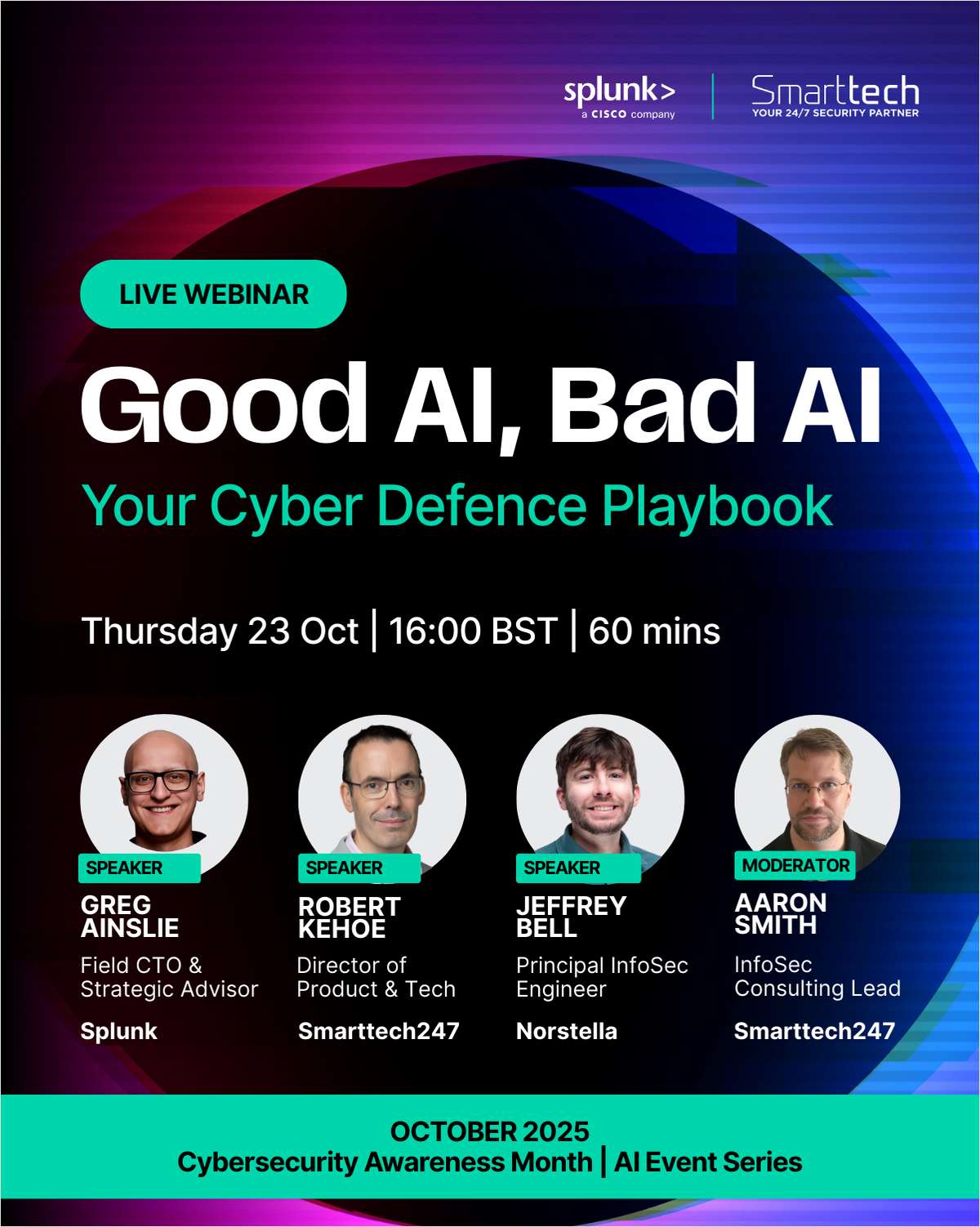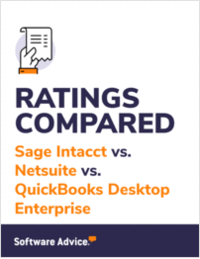Register for Your Free Live Webinar Now:
"Good AI, Bad AI: Your Cyber Defence Playbook"
Join host Aaron Smith with Robert Kehoe, Greg Ainslie from Splunk, and Jeffrey Bell from Norstella as they explore how AI is reshaping cybersecurity for attackers and defenders, what it means for key controls and industries, and the practical steps leaders should take in the first 90 days of adoption.
Artificial intelligence is changing the fundamentals of cybersecurity. Attackers have embraced it to automate phishing, mimic trusted communications, and create adaptive malware that learns from defenses. Defenders, in turn, are using AI to scale detection, accelerate investigations, and reduce analyst fatigue. The balance between threat and response has shifted, and the pace of change shows no sign of slowing. Understanding where AI strengthens security and where it increases exposure is now a priority for every security leader.
The session Good AI, Bad AI: Your Cyber Defence Playbook brings together host Aaron Smith with Robert Kehoe, Greg Ainslie from Splunk, and Jeffrey Bell from Norstella to explore these dynamics in detail. The conversation starts with a clear-eyed look at how AI has altered the landscape for both attackers and defenders. Participants will examine the real-world impact of large language models, generative tools, and autonomous agents, identifying what has fundamentally changed in the way adversaries operate and how defenders can adapt without adding unnecessary complexity.
Controls remain central to the discussion. Identity, data, and email security must be revisited in light of AI-enabled threats. The session also explores how to approach model governance and logging in environments where AI systems influence decision-making. These areas are no longer optional. They form the baseline for resilient operations in organizations that are adopting AI-driven approaches.
Industry-specific considerations add another layer of complexity. In finance and fintech, the speed and volume of transactions make AI both a powerful defensive ally and a potential source of systemic risk if misapplied. In healthcare and pharmaceuticals, AI adoption is shaped by strict compliance regimes and the need to protect sensitive patient and research data, with mistakes carrying regulatory and reputational consequences. The agricultural and food industries are beginning to see AI as a lever for supply chain monitoring and fraud prevention, while aviation faces heightened scrutiny around safety-critical applications and resilience against nation-state actors. Each sector illustrates a different dimension of the AI-security equation, and attendees will leave with a clear sense of what to watch and why it matters in their own industries.
Governance in practice is a recurring theme. The panel addresses how organizations can evidence compliance with frameworks such as the EU AI Act without slowing down operational teams. Establishing documentation, audit trails, and validation checkpoints is important, but leaders must avoid creating friction that discourages adoption. Striking this balance is essential for ensuring AI projects remain both compliant and effective.
Field experience grounds the conversation. A customer perspective highlights early wins from AI-assisted security operations as well as common pitfalls that leaders should anticipate. These lived examples underscore the importance of aligning AI investments with real business outcomes rather than theoretical promise.
The analyst workflow inside Splunk provides a concrete illustration of AI’s practical value. From the moment an alert is raised to the investigation and eventual response, AI is helping analysts triage more effectively, enrich context in real time, and focus attention on the events that truly matter. By weaving AI assistance directly into established workflows, teams can improve efficiency without overhauling the tools and processes they already rely on.
The discussion also highlights how VisionX for Splunk extends these capabilities. With built-in enrichment, improved risk scoring, and enhanced signal quality, VisionX provides a layer of intelligence that helps security teams cut through noise. This gives analysts confidence that their time is spent on meaningful signals, not wasted on chasing false positives.
Finally, the session turns to the critical first ninety days of AI adoption. Leaders are encouraged to think holistically across people, processes, and technology. Clear objectives should be set, supported by governance policies that build trust and accountability. Teams need early wins to build momentum, and metrics must be established from the start to track adoption, measure impact, and surface unintended consequences. By approaching the first phase with structure and clarity, organizations can position themselves for long-term success while reducing risk.
This webinar provides security leaders with a candid assessment of where AI is helping, where it is hurting, and how to design a strategy that gets ahead of both attackers and regulatory pressure. It blends perspectives from Splunk and Norstella with field insights and practical frameworks, equipping attendees with the knowledge to act decisively. The discussion moves beyond hype and theory to show what AI adoption actually looks like in practice, what controls must evolve, and how to build resilience across industries facing very different risks.
At its core, Good AI, Bad AI: Your Cyber Defence Playbook is a guide for CISOs, technology executives, and operational leaders who must navigate the dual challenge of defending against AI-driven threats while responsibly deploying AI themselves. The goal is not just to keep pace but to build a security posture that anticipates the next wave of change.
Offered Free by: Smarttech247
See All Resources from: Smarttech247






![[Webinar] How Spreadsheets and Generic ERPs Drain Your Profits](https://img.tradepub.com/free/w_ecis03/images/w_ecis03c4.gif)